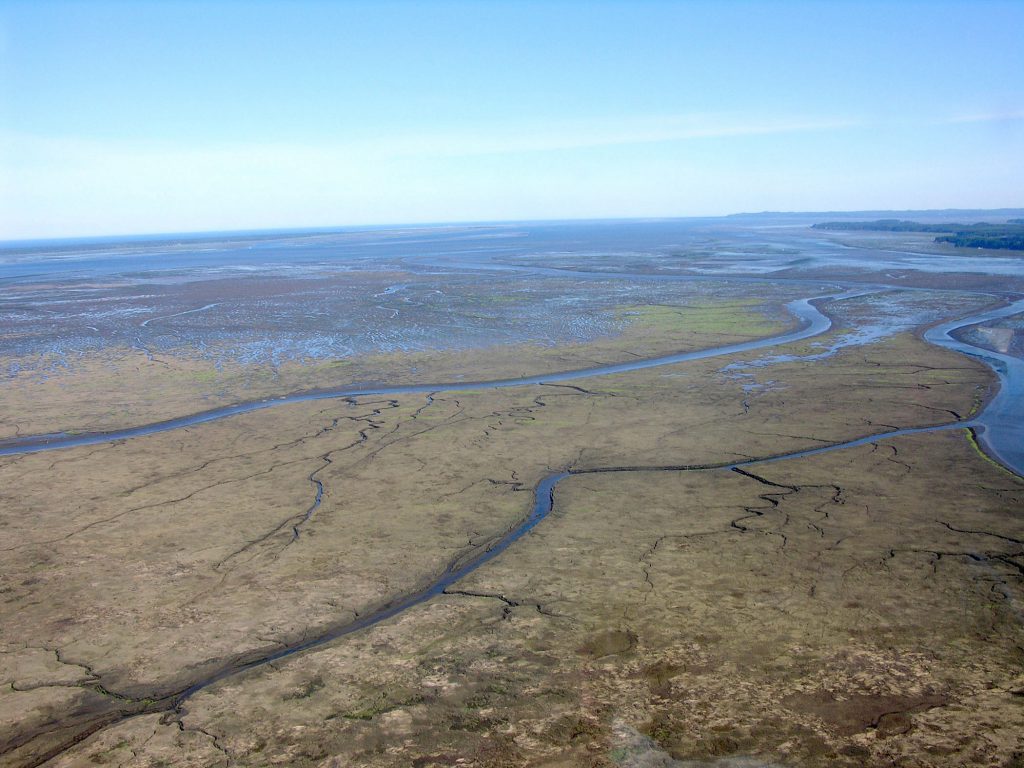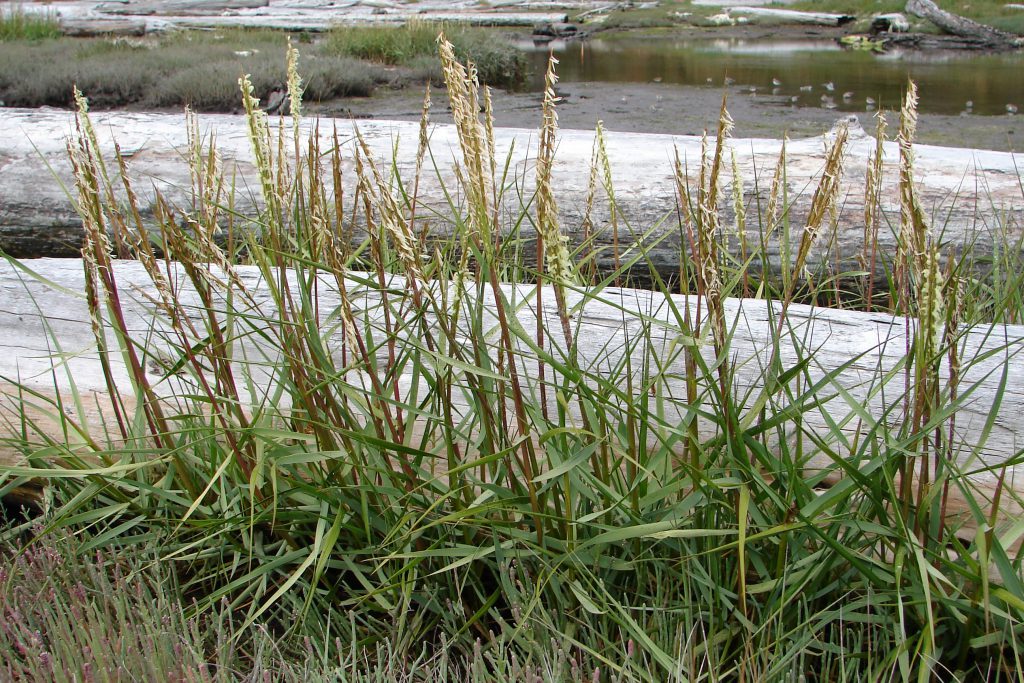Scientific name: Spartina alterniflora
What Is It?
Spartina species (also known as cordgrass) are aquatic grasses that grow on the mudflats and marshes of Puget Sound and coastal areas. There are four species present in Washington; all are listed as Class A noxious weeds. Spartina plants tend to grow in circular clumps called ”clones” and are bright green. Spartina came to Washington in the late 1800s, either in shipments of oysters from the East Coast or as packing material in ships’ cargo. It since has spread, vigorously colonizing intertidal saltwater areas as well as the perimeters of freshwater areas.
Is It Here Yet?
Yes. Spartina is in parts of Puget Sound, Grays Harbor, and Willapa Bay. It also has been reported in Jefferson, Kitsap, and Mason Counties. Small populations recently were located near the mouth of the Columbia River.
Why Should I Care?
Rhizomes, or underground stems, spread from most spartina plants in all directions. New plants grow from the outstretched rhizomes, eventually forming large patches. Clumps of cordgrass or seeds can break off and wash across bays and root in new areas. This weed reduces open mud feeding habitats of shorebirds, competes with native salt marsh plants, and alters the structure and function of wetlands. Once established, controlling and managing cordgrass is extremely difficult and expensive.
How Can We Stop It?
When the plants are very young (seedlings), manual removal by hand may be efficient. However, as soon as the extensive root system grows, hand-pulling is no longer recommended because any part of the root left can regrow. Repeated mowing may be effective over time. Start mowing in the spring when green first appears and continue through the fall die-back. Building dikes to flood an area eventually may kill the plants. Contact the local noxious weed control board to ask about herbicide control. Finally, Spartina species are on Washington’s Prohibited Plants and Seeds list, meaning they may not be transported, bought, sold, or distributed in the state.
What Are Its Characteristics?
Spartina species are very difficult to tell apart. Please report anything suspected of being in the Spartina genus. Here are some general characteristics of Spartina species:
- Tall, clumping grasses, 1 to 4 feet tall, that grow back each year.
- Leaves are flat blades. Plants have an outgrowth from the sheath of the leaf blade that can be hairy.
- Three of the four species have creeping underground stems. Above-ground stems are hairless and hollow.
- Flowering occurs from June to November, and flowers occur in upright spikes.
How Do I Distinguish It From Native Species?
Spartina may resemble native sedges (Carex spp.), or other grasses like saltgrass (Distichlis spicata), tufted hairgrass (Deschampsia caespitosa), or American dunegrass (Leymus mollis). Grasses like spartina have hollow stems that distinguish them from sedges. Seed and flower heads are the most reliable way to distinguish between different species of grasses.
Additional Photographs





